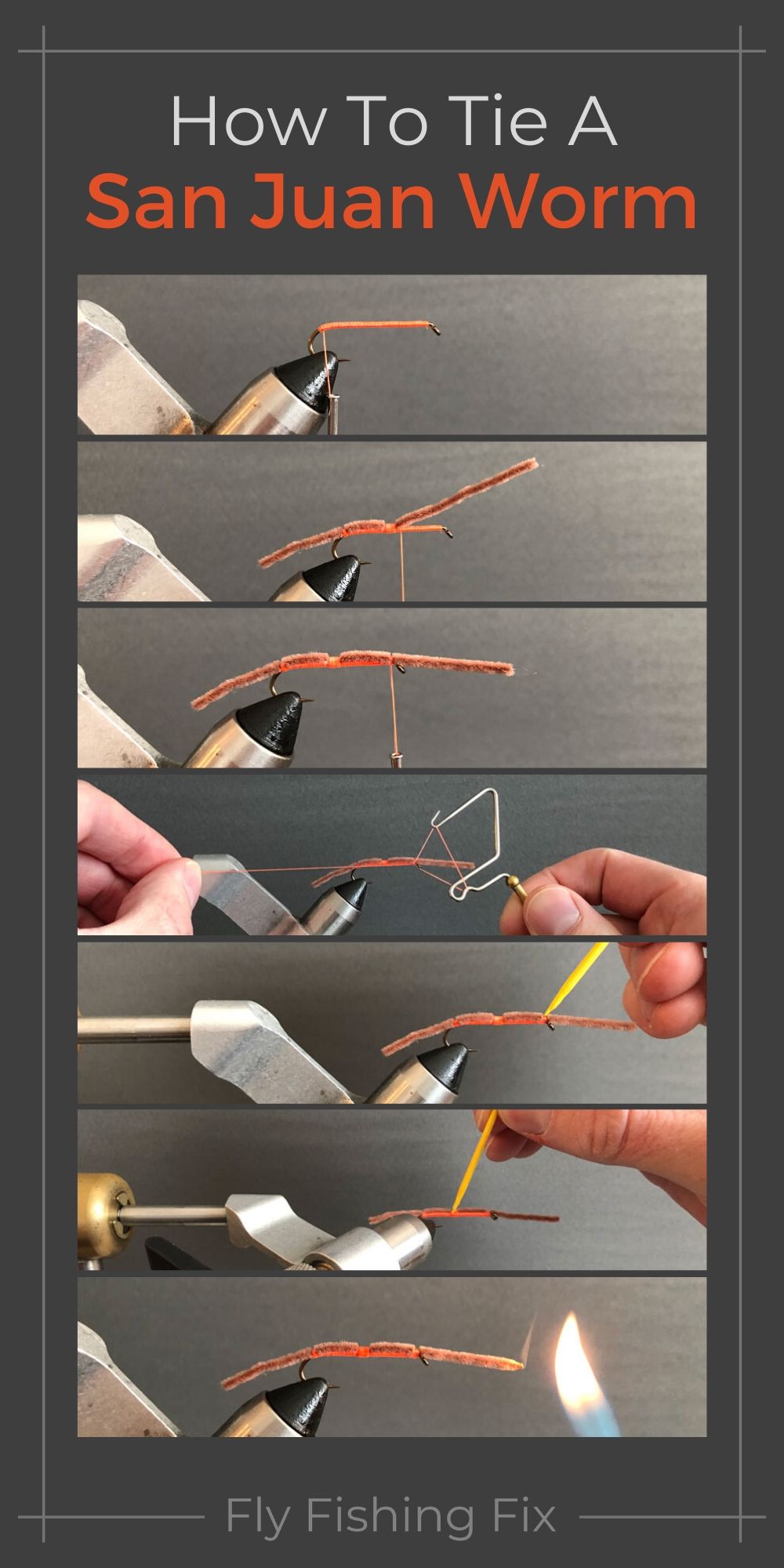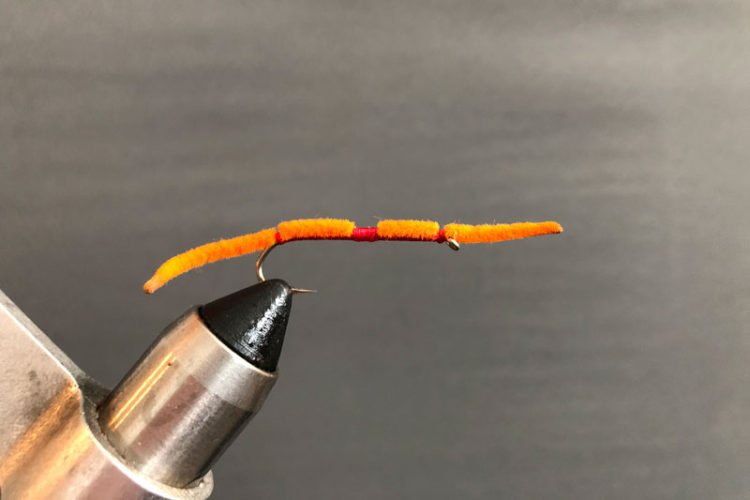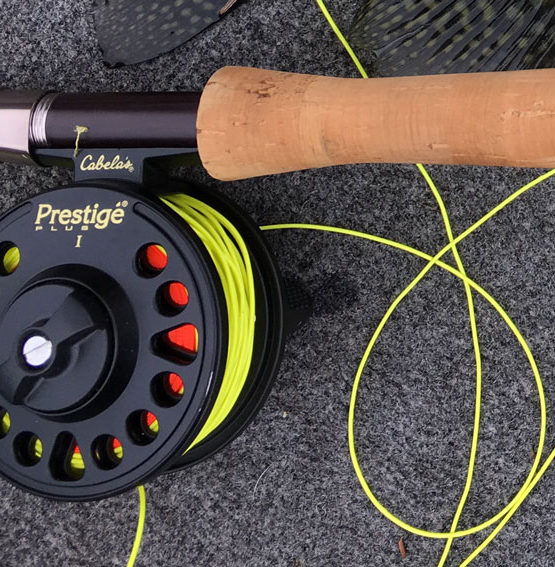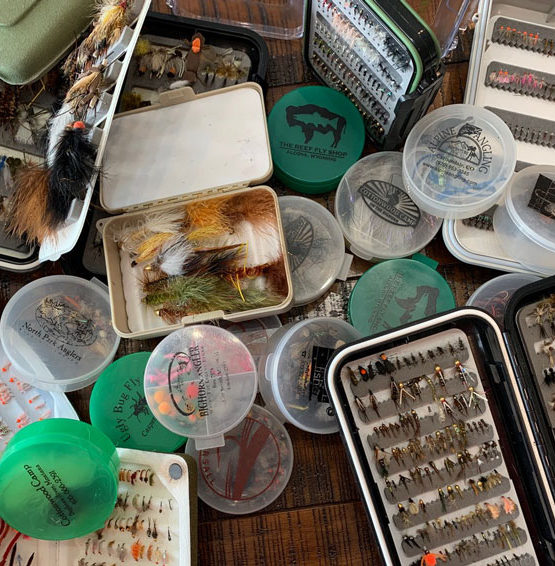When you first enter the world of fly fishing, and in particular, fly tying, the San Juan Worm should be one of the first fly patterns to occupy your fly box. It is easy to tie, easy to rig, and just plain catches a lot of fish. But, before we go too much further, let me first answer the question, what is a San Juan Worm?
A San Juan Worm is a fly pattern designed to imitate an aquatic worm (or annelid). Constructed of three materials–a hook, thread, and chenille–San Juan Worms are known for their simplicity, durability, and versatility, as they can be fished year-round, and in nearly any body of water.
I would go as far as saying that a San Juan Worm is the most versatile fly you can keep in your box. Seriously, I don’t think I have fished a single river where it wasn’t a valid option.
And if I’m being honest, some of my slowest fishing days have been saved by this wonderful little pattern.
That’s why, in this post, I am going to cover just about everything you need to know about the San Juan Worm. I only hope this fly will bring you as much success as it has for me.
Let’s get started.
Disclaimer: This post may contain affiliate links, meaning we will receive a small commission (at no cost to you) if you click through and make a purchase.How To Rig A San Juan Worm
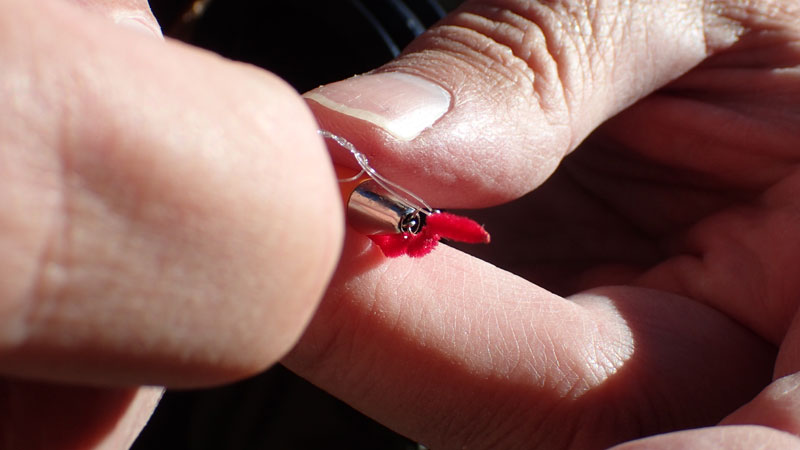
In most cases, you should plan to rig your San Juan Worm as the top nymph in a tandem nymph rig. In other words, it should be the fly that’s further from the end of your line. Though, this doesn’t always have to be the case. You can most definitely rig it as your bottom bug.
In my experience, I have just had better luck with flies trailing behind a San Juan Worm rather than the other way around.
Additionally, with the exception of small or shallow streams, you should plan to add weight to your rig when fishing with this fly pattern. Since aquatic worms tend to live among the plant-life of rivers, the closer to the bottom of a river you can get, the better.
You’ll often hear fly fishermen talk about ‘ticking bottom’, which means your flies are deep enough that they are bumping rocks along the riverbed, causing your strike indicator to twitch a little bit. And in most cases, when fishing with a San Juan Worm, ticking bottom should be your goal.
To give you additional clarity, a tandem nymph rig should essentially follow this pattern:
- Leader With A Strike Indicator
- Split-Shot Weights
- Place these just above the knot connecting your first section of tippet to your leader in order to keep them from sliding down.
- Tippet
- San Juan Worm
- Tippet
- You can connect this section of tippet to the hook shank, or if you want your San Juan Worm to wriggle a little more, you can tie it through the eye of the hook again.
- Trailing Nymph
- Or an additional San Juan Worm if you really want to get crazy!
You Might Also Like:
- What Is A Parachute Adams? And What Does It Imitate?
- 25 Best Dry Flies For Colorado Fly Fishing
- 9 Killer Nymphing Tips For Beginners
- Fly Fishing Gear For Beginners – Here’s What You Need
- What Is An Attractor Fly? (With 10 Examples)
- What Are Parachute Flies? (Plus 5 Great Examples)
- Fly Tying For Beginners (The Ultimate Guide)
How To Fish A San Juan Worm
You can fish a San Juan Worms just like any other nymph. As I mentioned earlier, the key is to just get it deep enough to float along the bottom of the river because that’s where annelids typically live.
However, if you are fishing a small stream, you can also use a San Juan Worm as a dropper from a dry fly. Though, if you are going to go this route, I would recommend using a worm with a bead head tied into it to imitate the clitellum (the smooth section of an annelid where its eggs are stored). This will add a little weight, which will help it to sink a little deeper — and quicker.
Also, if you are going to drop a San Juan Worm behind a dry fly, you should use a little more tippet than you typically would on a tandem nymph rig. Once again, this will allow it to sink a little deeper.
When To Fish A San Juan Worm
San Juan Worms are best fished in Springtime, because that’s when it rains a lot, snow melts, and rivers run high. The reason that is significant, is because when a river rises, it pulls worms out from the mud in the bank of a river, and fish just lose their minds.
What’s most fun about this time of year is that you can get away with fishing bigger worms. I mean, have you ever pulled an earthworm out of the mud? They can get huge. So don’t be afraid to tie on a big ol’ San Juan Worm in the Spring. It’ll look like a big, tasty, t-bone steak to all those hungry trout.
Another great time to use a San Juan Worm is when you are fishing murky water. I’m not sure if it’s the bright colors, the large size, or a combination of both, but when water clarity is bad, San Juan Worms often perform well.
San Juan Worm Recipe
| Hook | Streamer Hook or Curved Nymph Hook (Sizes: 6-14) |
| Thread (body wrap) | 6/0 Waxed Uni-Thread (Red, Orange, Pink, Brown, Tan, Maroon, Purple, etc.) |
| Body | Ultra Chenille (Red, Tan, Brown, Pink Orange, Wine, Purple, etc.) |
| Bead (Optional) | You can use a colored bead (mid-body) to add a little flash and accentuate the Clitellum. |
| Head Cement Or Super Glue | Dab a bit of this on the whip finish, as well as the Clitellum. |
| Lighter | Use a lighter to singe the ends of your chenille and give the fly a more worm-like appearance. |
How To Tie A San Juan Worm
If you are just getting into fly tying, the San Juan Worm is a great place to start. It is a simple pattern made with cheap materials, so it is a perfect fit for a new fly tyer. The best part is, if you want to buy one in a fly shop, they might cost as much as $2 (or even more in some places). Whereas, if you tie your own, it only costs a few cents per fly. Here’s how to tie one.
Step 1: Body Wrap

Clamp your hook within your vise and wrap the body with a solid layer of 6/0 Waxed Uni-Thread. The color of the wrap can either match the chenille you will be using for the body, or you can make them different. My personal favorite is a bright orange wrap with a light tan chenille. Start your wrap near the hook shank, wrap the thread forward to the eye (securing your thread to the hook), and then double back on your first wrap to the shank again. This will ensure a nice clean wrap, with no signs of the hook showing through.
Step 2: Start The Body
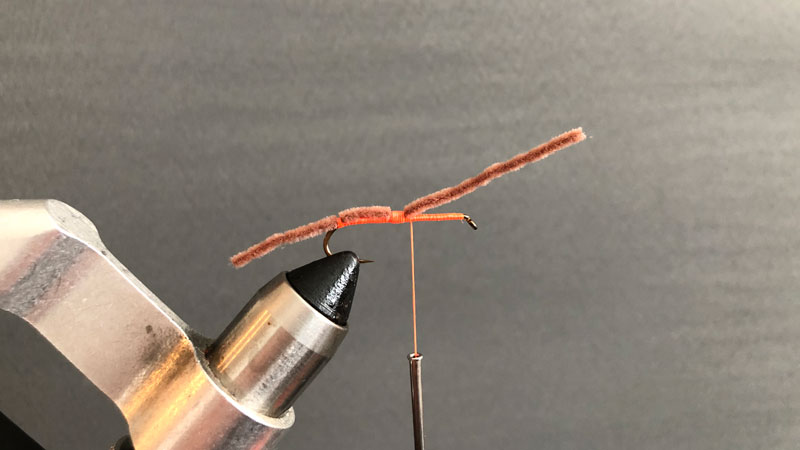
Cut a piece of Ultra-Chenille approximately 1.5X – 2X the length of the hook. Center it on the hook and secure it to the hook shank with two or three tightly-spaced wraps. Then, lift the chenille and wrap your thread up the hook (underneath the chenille) until you reach the halfway point on the hook. At this point, lower the chenille and secure it to the hook shank while also building-up enough wraps to form the Clitellum.
Step 3: Finish The Body
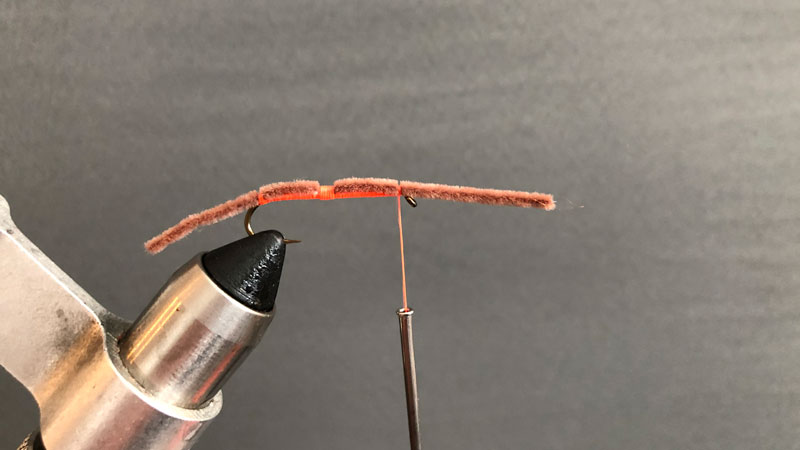
Lift the chenille and continue to wrap your thread toward the eye of the hook Then, lay the remaining Chenille down on the hook and secure it with one or two thread wraps.
Step 4: Whip Finish
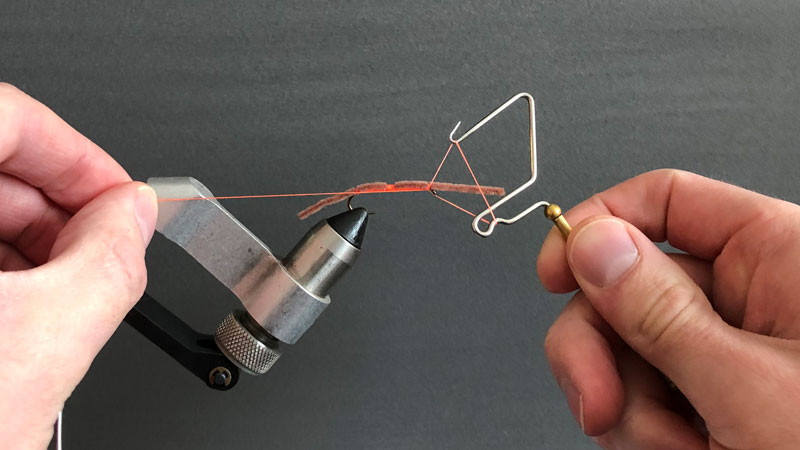
Whip finish with 2-3 wraps, and cut the loose end.
Step 5: Add Head Cement To Whip Finish
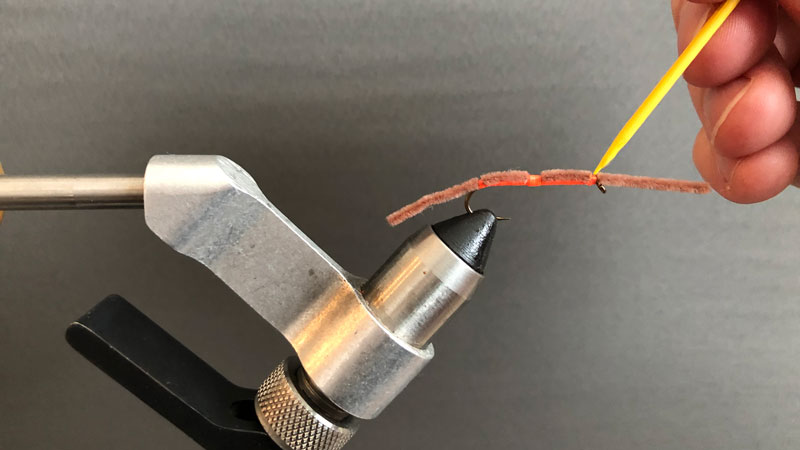
Using a toothpick, carefully place a drop of head cement or thin-viscosity super glue on the whip finish (doing your best to keep it from touching the chenille). Then, flick any glue from the eye of your hook by pressing on the eye and letting your finger slide off. This will cause the eye of the hook to bounce back and clear any excess glue out of there.
Step 6: Add Head Cement To Clitellum
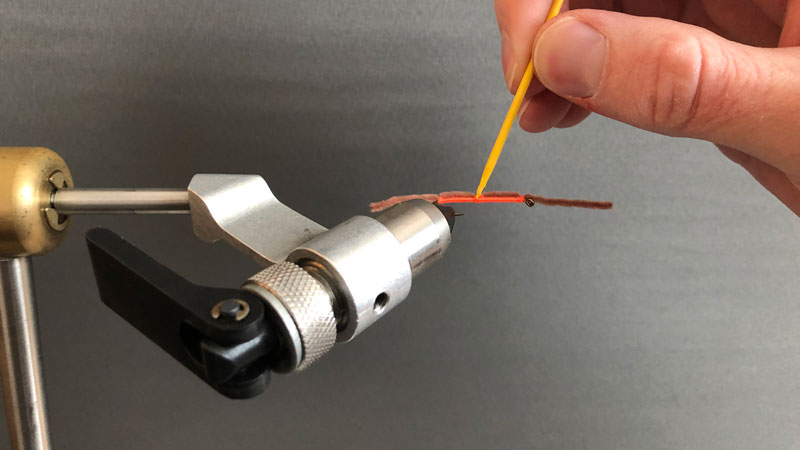
Using a Toothpick, carefully dab a bit of head cement or super glue around the clitellum thread wrap. This will keep it from fraying.
Step 7: Taper The Ends

With your lighter, wave the flame over the tag-ends of the chenille. This will add a nice taper to the ends, giving the pattern a much more life-like appearance. (Important: Chenille burns very quickly, so do this quickly. Otherwise, you will wreck your freshly tied pattern.)
San Juan Worm: Bottom Line
If you are new to fly fishing or fly tying, the San Juan Worm is sure to bring your success. So, pick up a few from your local fly shop, order some online, or just tie your own, just be sure to always have a few on hand. The San Juan Worm should be a staple in your fly box.
